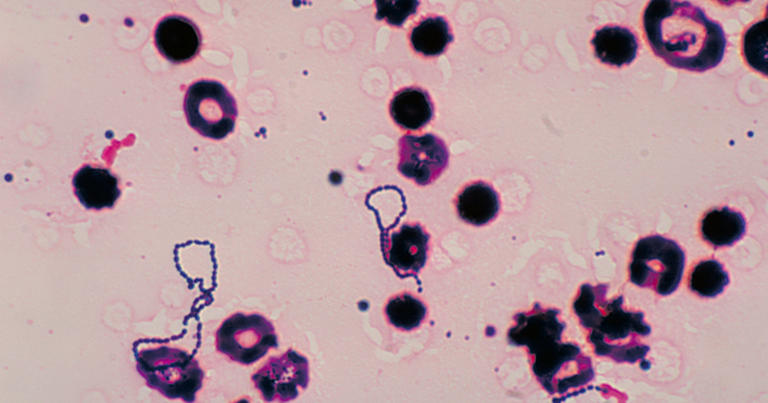“H5N1 pandemic risk is becoming a growing concern as the virus continues to evolve in mammals, increasing the potential for human transmission. Learn more about the latest research and its implications.”

© GB News
H5N1 Pandemic Risk: A Growing Threat
The H5N1 pandemic risk is becoming an alarming reality, with scientists expressing concern over the virus’s evolving nature. A recent study led by The Pirbright Institute highlights the failures of global control strategies for the H5N1 avian influenza virus, commonly known as bird flu. With outbreaks now occurring in European fur farms, South American marine mammals, and U.S. dairy cattle, the question of whether humans will be affected is becoming more urgent. This review, published in Nature, shows how the virus is spreading in mammals, raising concerns that it could soon affect humans.
The Spread of H5N1: A Global Concern
The H5N1 pandemic risk is no longer confined to wild birds and poultry. The virus has already been detected in various mammals, including dairy cows across 14 U.S. states. So far, 14 human cases of H5N1 have been confirmed globally, with one case having no known link to infected animals. Dr. Thomas Peacock, a zoonotic influenza specialist leading the study, explains that the current ecological and evolutionary changes in H5N1 are increasing the likelihood of the virus spilling over to humans. This is particularly concerning given the virus’s high mortality rate.
Why Cows and Mammals Are a New Concern
One of the biggest red flags in the H5N1 pandemic risk is its spread to mammals, particularly cows. Historically, swine have been considered the primary intermediary for avian influenza viruses to adapt to mammals before jumping to humans. However, the virus’s recent leap to cows could indicate that the virus is finding new ways to spread.
What makes the H5N1 pandemic risk even more unsettling is that the U.S. has significant gaps in its control mechanisms. H5N1 is a reportable disease in poultry, but not in mammals. This means that while poultry are being tested regularly, mammals like dairy cattle are not subject to the same level of scrutiny. Testing is only required for lactating cattle before interstate movement, which creates opportunities for the virus to spread undetected in other areas.
Evolutionary Pathways: Genomic Reassortment
The driving force behind the current H5N1 pandemic risk is a process called “genomic reassortment.” This happens when two or more viruses infect the same host and exchange genetic material, creating new hybrid strains. Researchers believe that the panzootic H5N1 virus in the Americas originated through reassortment between H5N8, a subtype of bird flu, and low pathogenicity avian influenza (LPAI) viruses. This likely occurred in Europe or Central Asia around 2020, eventually spreading to South American marine mammals and U.S. dairy cattle.
The growing presence of H5N1 in both Europe and the Americas marks a turning point for the virus, which was first identified in wild geese in Southeast China. Scientists are now warning that the H5N1 pandemic risk is reaching new levels, with potential consequences for human populations.
Control Strategies and Vaccine Development
As the H5N1 pandemic risk rises, scientists are calling for new control strategies. Current vaccines for poultry can reduce disease severity but do not prevent infection. Researchers suggest that modern vaccine platforms, like mRNA, could be deployed on a large scale if H5N1 begins spreading among humans. Stocks of antigenically related H5 vaccines are available and could be quickly scaled up if needed.
However, there is concern that existing vaccines may not be effective against some of the rare mutations of the virus. One such mutation, known as A156T, has been found in both cattle and humans. This rare mutation could potentially evade antibodies generated by current vaccines, increasing the H5N1 pandemic risk.
Professor Jesse Bloom from the Fred Hutchinson Cancer Center has conducted research showing that the A156T mutation reduces the ability of antibodies to neutralize the virus. In one recent human case in Missouri, a person was infected without having any known contact with infected animals or exposure to raw milk. This raises concerns that H5N1 could already be spreading between humans, undetected.
A High Mortality Rate, but a Complex Picture
The H5N1 pandemic risk is particularly frightening due to the virus’s high case fatality rate (CFR). Since January 2003, the CFR for H5N1 in humans has been 52%, meaning more than half of reported infections have resulted in death. However, this number might be an overestimate, as many mild or asymptomatic cases likely go unreported.
Recent outbreaks of H5N1 in the U.S. have been less severe, with patients reporting flu-like symptoms before recovering. Researchers note that the lower severity may be linked to how the virus infects the body. U.S. cases have shown that the virus can enter through the eye rather than the lungs, leading to milder illness.
However, the severity of a future H5N1 pandemic remains uncertain. While the recent cases have been less severe, scientists warn that the virus’s rapid evolution could lead to more dangerous variants. Additionally, older individuals who were exposed to similar viruses during their youth may have partial immunity, while younger generations born after the 1968 H3N2 pandemic could be more vulnerable to severe illness.
Conclusion: Preparing for the Worst
The H5N1 pandemic risk continues to evolve, with scientists growing increasingly concerned about its potential to cause a new global health crisis. The spread of the virus among mammals, particularly cows, along with its ability to mutate, presents significant challenges for public health. While vaccines and modern surveillance technologies offer some hope, current strategies are not sufficient to prevent the virus from spreading.
The world must take immediate action to improve testing, data sharing, and vaccination efforts in order to mitigate the H5N1 pandemic risk. Without these steps, the virus could silently evolve into a deadly pandemic, with devastating consequences.
Related:
“UK Tripledemic Vaccination Campaign: 7 Terrifying Risks of Not Getting Vaccinated!”




1 COMMENTS